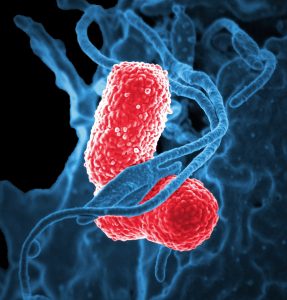It is currently the malaria season in Southern Africa and many travelers will have been exposed during their recent holidays. Each year, otherwise healthy travellers die from malaria because of a missed diagnosis, delays in treatment or incorrect medication used. The diagnosis and treatment of malaria constitute a medical emergency. There should be a high index of suspicion for malaria in any person who develops a febrile illness post-travel to a malaria- risk area.
Young children and pregnant women are particularly prone to complications and if untreated can die within 24 to 48 hours of the onset of symptoms. Common symptoms of malaria in adults are those that mimic ‘flu’ and include fever, headache, cold shivers and sweats and muscle aches. Young children are more likely to present with fever and lethargy. If symptoms develop within three months of a visit to a malaria area it is critical to consult a medical practitioner or primary health care clinic and inform them of a visit to a malaria area and have a blood test done as a matter of urgency. A repeat test may be necessary the next day if the initial test is negative and symptoms persist. The most common misdiagnosis of malaria is influenza because of similar symptoms.
Drug resistant malaria strains are an increasing problem globally, with drugs like chloroquine and Fansidar now largely ineffective. The artemesinin-based combination compounds (eg Coartem), and quinine regimens remain highly effective. The drug Coartem is a state of the art treatment and first choice for uncomplicated malaria in the public malaria programmes in Mpumalanga, Limpopo and Kwazulu Natal.provinces. It is also available for treatment in the private sector and some of the other provinces.
The National and Provincial Malaria Control Programmes have been very successful in reducing the malaria risk in South Africa with numbers of reported cases decreasing from 60 000 in the 2000 season, to an average of around 7000 cases annually in Mpumalanga, Limpopo and Kwazulu Natal. Nevertheless at this time of the year residents and visitors to the areas need to be aware of the risk. Limpopo province reported an increase in cases in the Mopani and Vhembe districts (Masisi, Malamulele, Giyani and Ba-Phalaborwa) during the second half of December 2010 as compared to the same time in 2009 while numbers of cases in the far northern KwaZulu-Natal, and the lowveld areas of Mpumalanga, including the Kruger National Park have shown the expected seasonal increases.
The majority of travel-related malaria is seen in those returning from Mozambique. This clearly is a reflection of the large numbers of visitors to this country from South Africa, and also of the significant malaria risk particularly in areas north of Maputo.
Personal protection against mosquito bites remains essential in malaria prevention, and should be used throughout the year in malaria risk areas through the use of effective insect repellents and related -methods like insecticide-impregnated bednets. In addition the use of preventative anti-malarial medication is recommended for specific areas with significant risk.
Issued by the National Institute for Communicable Diseases, a division of the National Health Laboratory Service.
For more information please contact Nombuso Shabalala on 011 555 0545 or 082 886 4238


